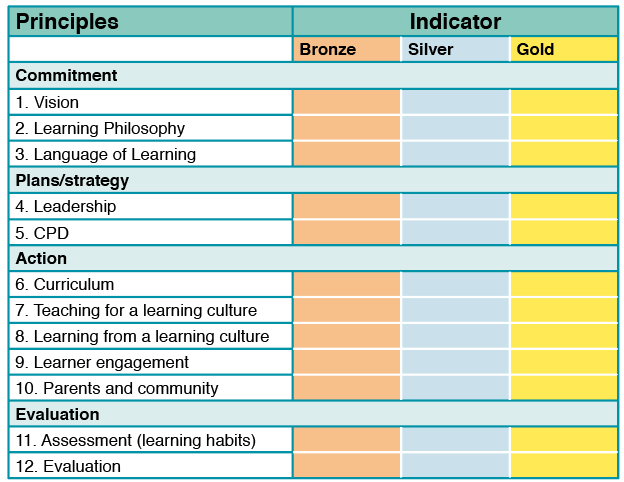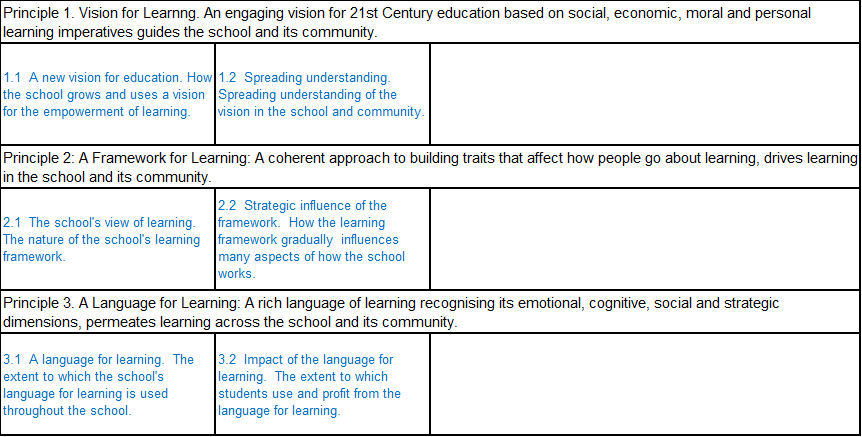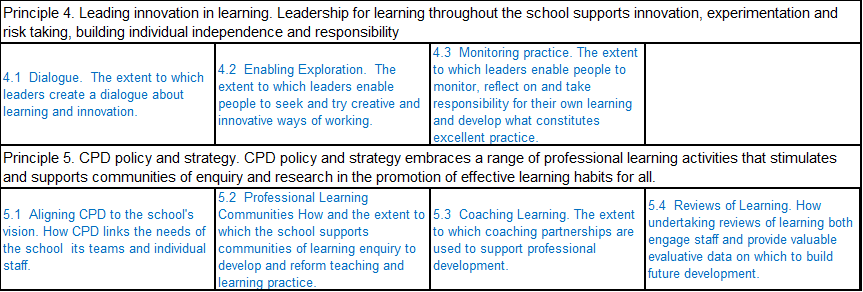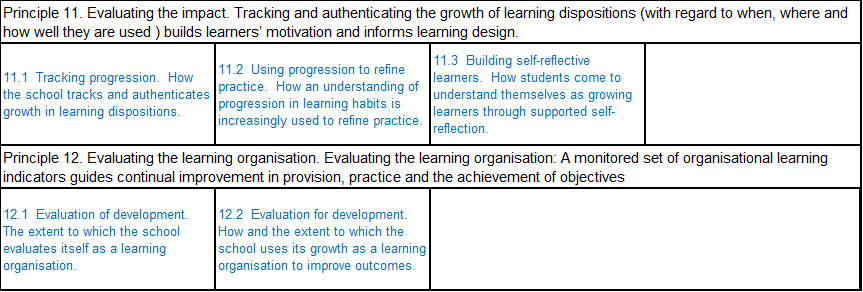The Quality Standard: heart of LQF
The Learning Quality Framework offers schools a rich view of learning and learners, unlocking the features of a learning school. At its heart is the Quality Standard that captures how key aspects of a school’s culture link and grow together to become a learning organisation. The Learning Quality Standard blends the ideas of a learning organisation with the latest ideas in the ‘how’ of learning to provide a route map for a learning journey
The standard is structured around four dimensions, twelve principles and thirty two indicators.
Dimensions
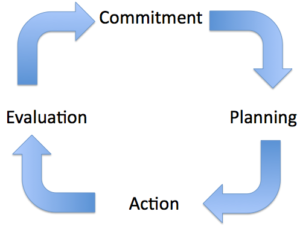
The Learning Quality Standard has four dimensions which follow the well known quality improvement cycle and each of the Principles fall into one of these dimensions.
Principles
The Learning Quality Standard has twelve Principles of learning that are concerned with different aspects of a school’s culture. These include the school’s vision for education, its beliefs about learning, how leaders lead learning, how classroom practice, assessment and the curriculum are best designed to build people’s learning habits, how staff are best enabled to develop their practice, and how the school itself acts on its own learning.
Statements of practice (indicators)
Each principle is described through Indicators, or statements of practice. These show how the principles are enacted in practice. And since the whole point of the standard is to describe a learning journey, the statements of practice are related to four stages of development; coherent staging points on the journey where you might take time to reflect and prepare for the next stage.

Stages of Development
Starting out on the journey (Bronze) – At this stage the school is actively casting around for and trying out ideas, building a culture of experimentation, self-reliance and learning rather than dependency and performance.
Developing (Silver) – By this stage the school is using its learning from enquiry to create its best-fit learning strategy and is harnessing professional development to ensure outstanding learning through outstanding teaching. It’s bringing its learning philosophy to life.
Establishing (Gold) – Here the learning driven approaches to pedagogy, professional development, student engagement, assessment and curriculum design are deeply embedded in the school’s culture, not reliant on a few leaders or champions, and becoming world class.
Enhancing (Platinum) – The school is operating as a learning organisation where all its people, staff and students alike, expand their capacity to create the results they truly desire and engage with other organisations to create wider cultures of learning.
What the Standard looks like.
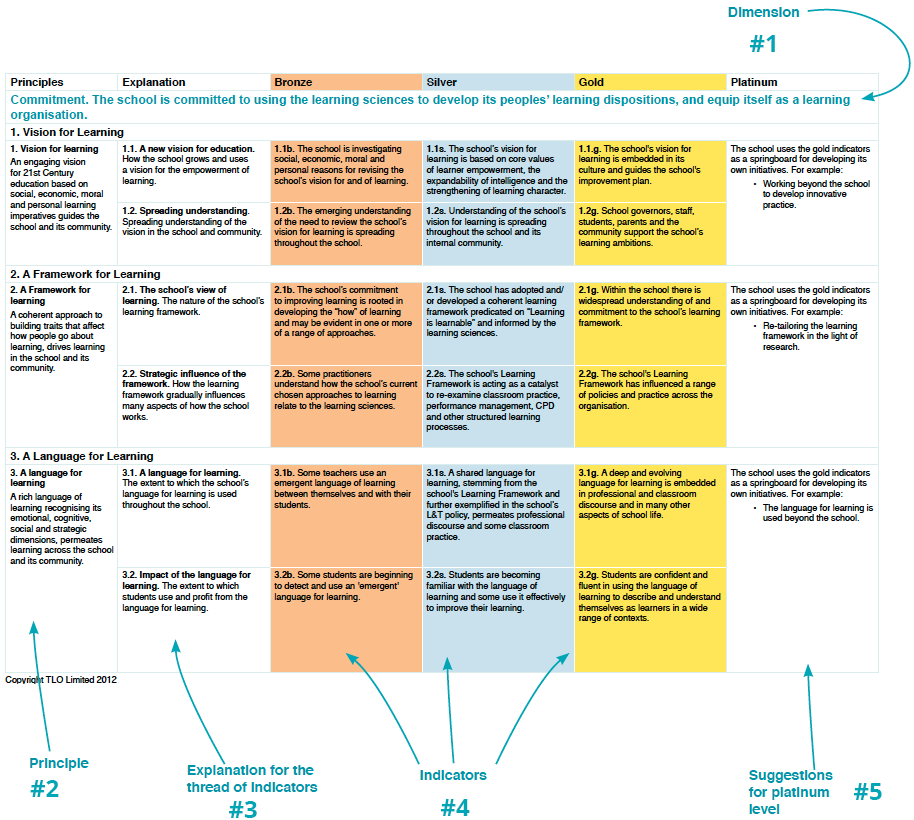
- One of the four dimensions
- One of the twelve principles
- An explanation of a string or thread of indicators
- One of the thirty-two indicators across bronze, silver and gold levels.
- Suggestions for platinum level action for each principle
This economical format gives an at-a-glance view of the Learning Quality Framework.
Weaving the threads of good practice
The framework offers criteria of good practice. Nothing is hidden. It describes best practice throughout the learning journey and thus ensures the school has all the components or threads in place to be able to move forward. Classroom practice won’t develop without appropriate professional development; the school is unlikely to make headway without sympathetic leadership characteristics; advances in classroom practice will stall without accompanying curriculum development; the learning philosophy of the school will face an uphill battle unless parents are brought on board. So the Learning Quality Framework weaves together all the threads a school needs to pay heed to on its journey in becoming a learning school.
Back to Step 1
